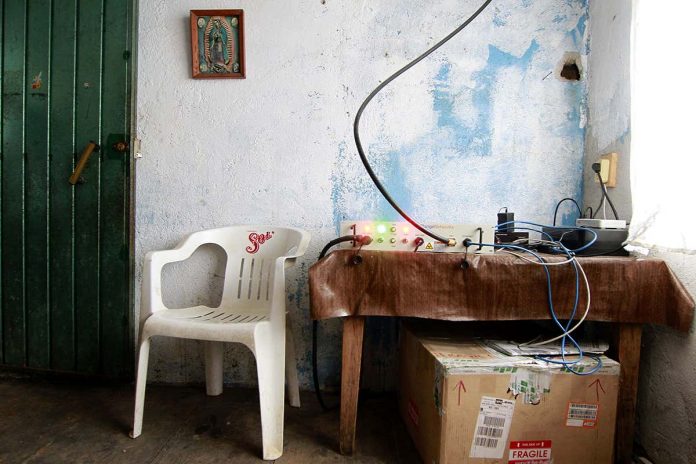[ad_1]
When nobody else would build a phone network in the rural Mexican community of Talea de Castro, they decided to go it alone. Connected tells their story and makes for fascinating reading
Technology
14 October 2020

Carlos Salinas/Afp Via Getty Images
IN 2013, the world’s news media fell in love with Talea de Castro, a Mexican village (population around 2400) in a remote corner of northern Oaxaca. América Móvil, the telecommunications giant that ostensibly served their area, had refused to provide them with a mobile phone service, so the Taleans built their own.
Imagine it: an embattled, predominantly indigenous community besting and embarrassing Carlos Slim, América Móvil’s owner and the richest person in the world at the time. The full story of that short-lived, home-grown network is more complicated, says Roberto J. González in his fascinating account of rural innovation.
Talea de Castro was never a backwater. A community that survived Spanish conquest and has resisted 500 years of interference by centralised government may become many things, but “backward” isn’t one of them.
Advertisement
Globalisation is a homogenising whirlwind of technology, finance and bureaucracy that brings with it new roads, hospitals, schools, entertainment, jobs and medicine. Yet for every outside opportunity seized, indigenous skills are watered down or forgotten. Talea de Castro’s farmers can now export coffee and other cash crops, but many fields lie abandoned as its youth migrate to the US. The village still tries to run its affairs – indeed, the entire Oaxaca region staged an uprising against centralised Mexican authority in 2006.
Some traditional Mexican buildings are built partially of mud. It is much easier and cheaper to use – not to mention a more repairable and more ecologically sensitive material – than the imported alternatives. Despite this, almost every new building in Talea de Castro is made of concrete.
The village backed another piece of imported tech in 2013: a DIY phone network, assembled by US-born rural development specialist Peter Bloom and Erick Huerta, a Mexican telecoms lawyer. Both considered access to mobile phone networks and the internet to be a human right. Also involved were “Kino”, a hacker who helped indigenous communities evade state controls, and Minerva Cuevas, an artist best known for hacking supermarket barcodes.
Talea de Castro’s network ran off an open-source mobile phone network program called OpenBTS. Mobiles within range of a base station could communicate with each other and connect globally over the internet.
Yet the network never worked very well. Whenever the internet went down, the whole place lost its mobile coverage. Recently, the phone company Movistar has moved in with an aggressive plan to provide the region with regular (if costly) coverage. The idea of an autonomous network in Talea de Castro lives on, however, in a cooperative organisation of community cell phone networks that represents nearly 70 villages across several regions in Oaxaca.
Connected is an account of how a rural community takes control over the forces that threaten its existence. The people of Talea de Castro are dispersing ever more quickly across continents and platforms in search of a better life. The “virtual Talea” they create on Facebook and other sites to remember their origins are touching, but the fact remains: 50 years of development have done more to unravel a local culture than 500 years of conquest.
Connected: How a Mexican village built its own cell phone network
University of California Press
More on these topics:
[ad_2]
Source link











